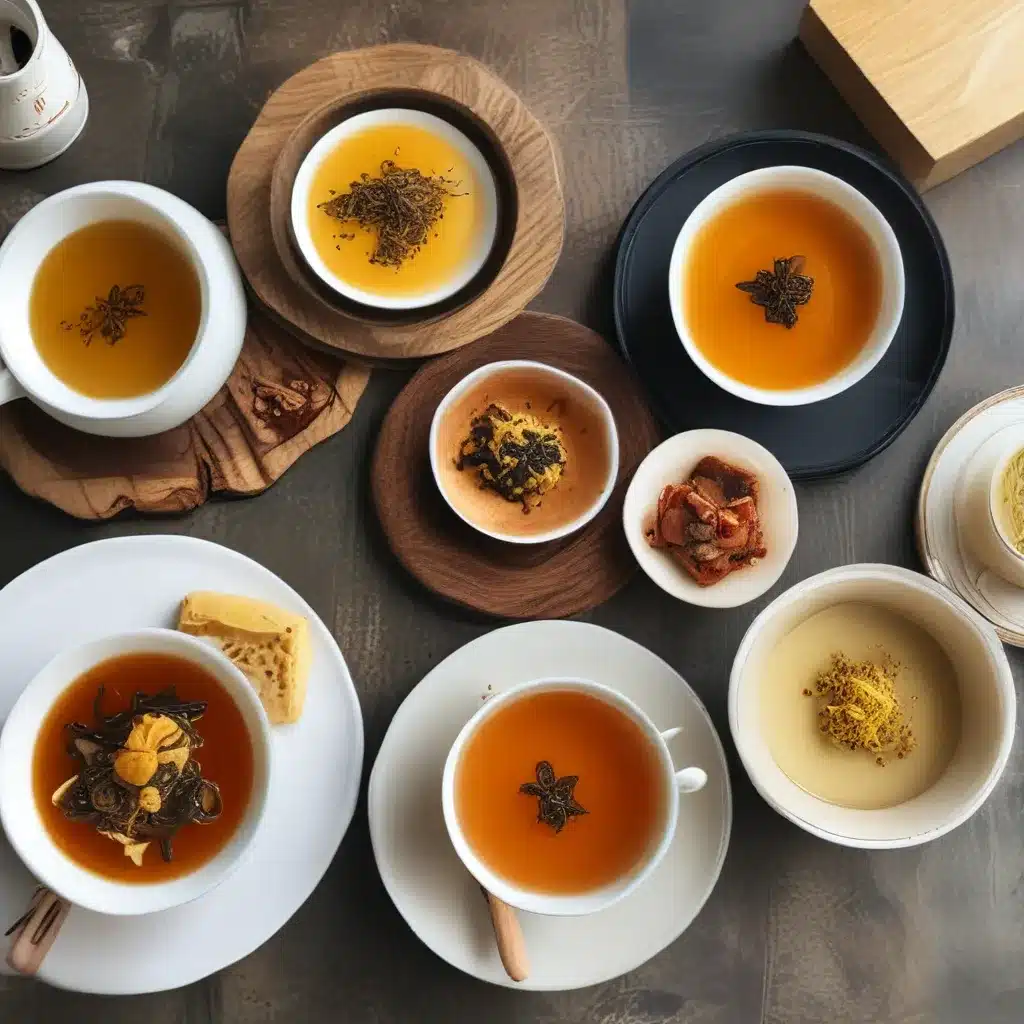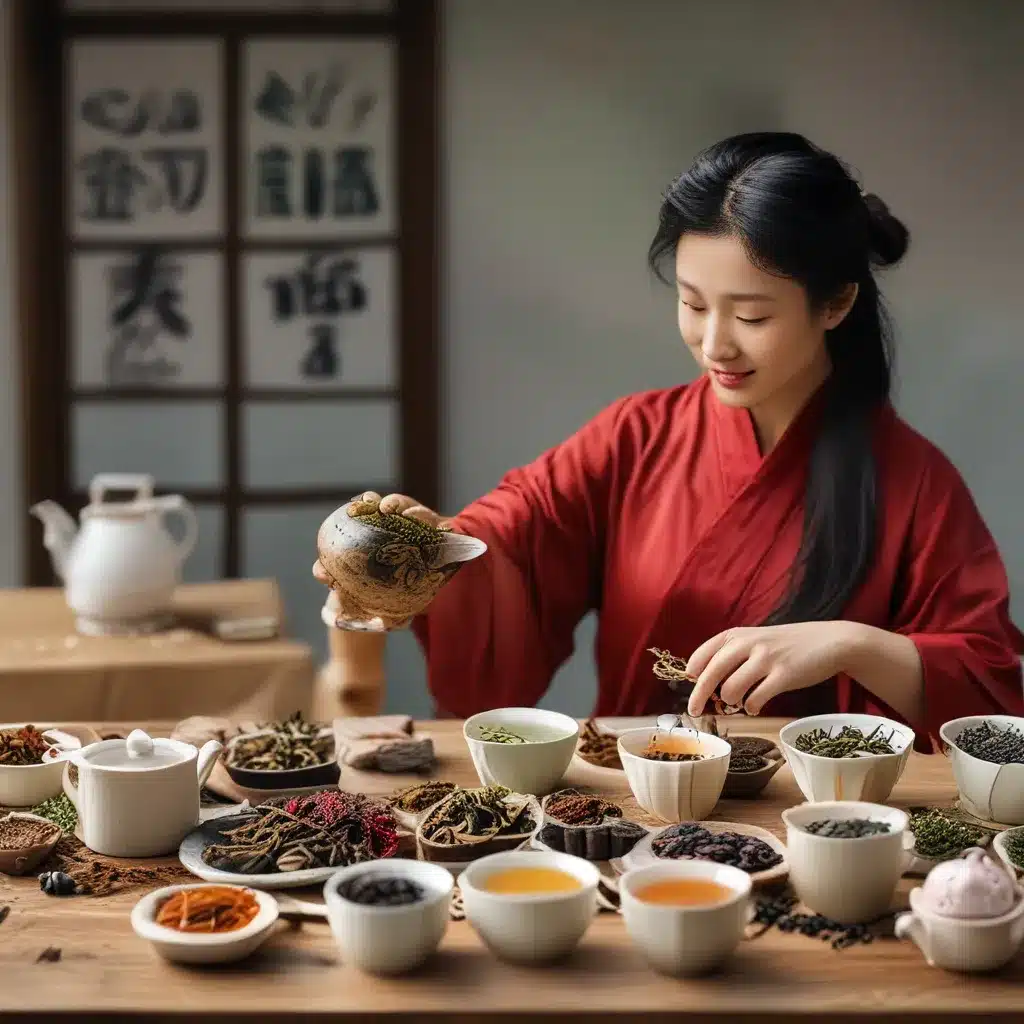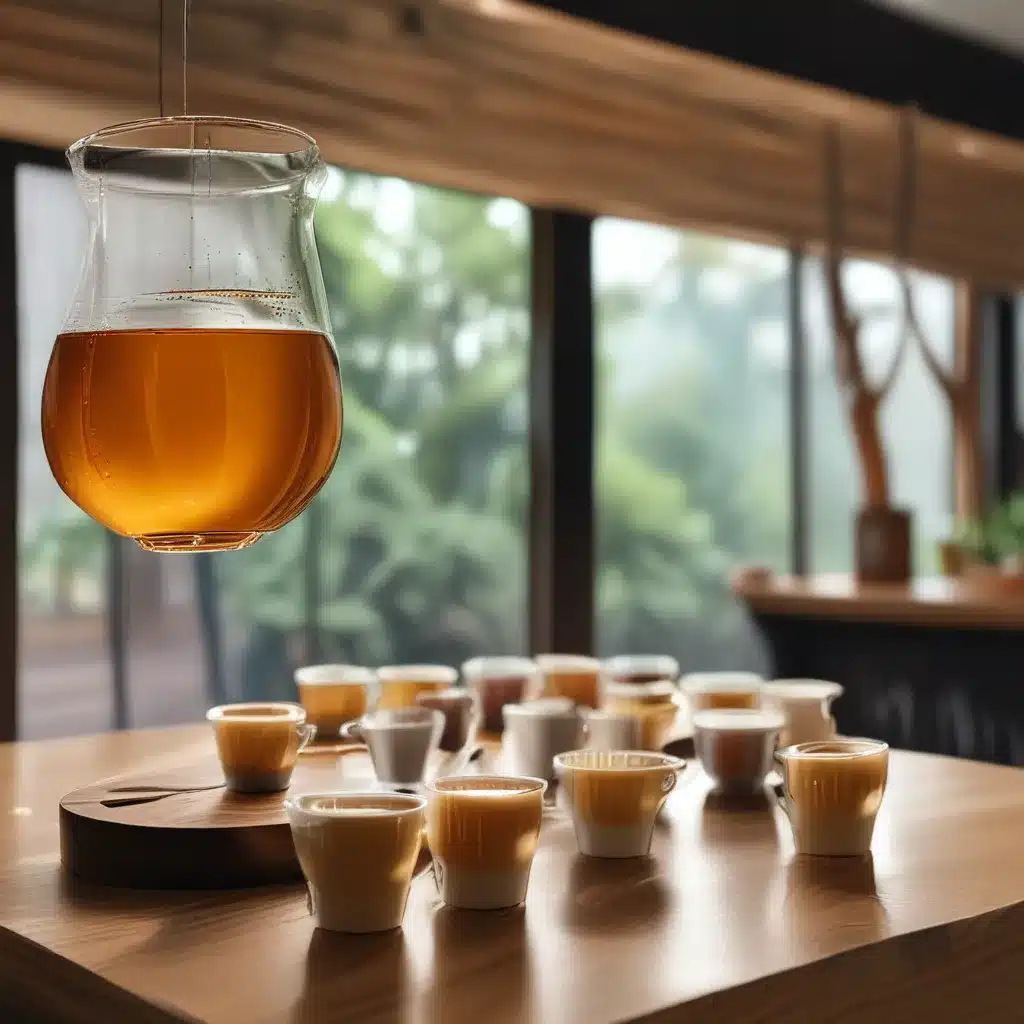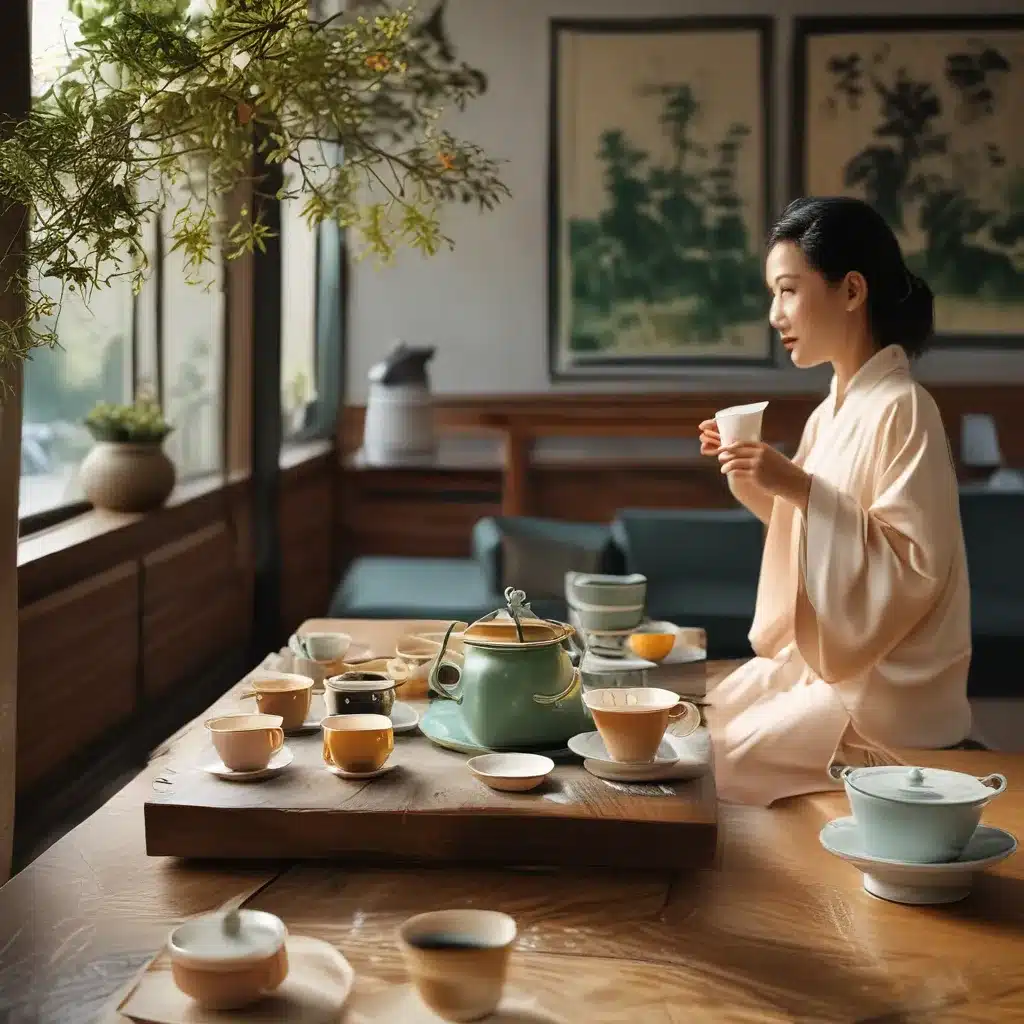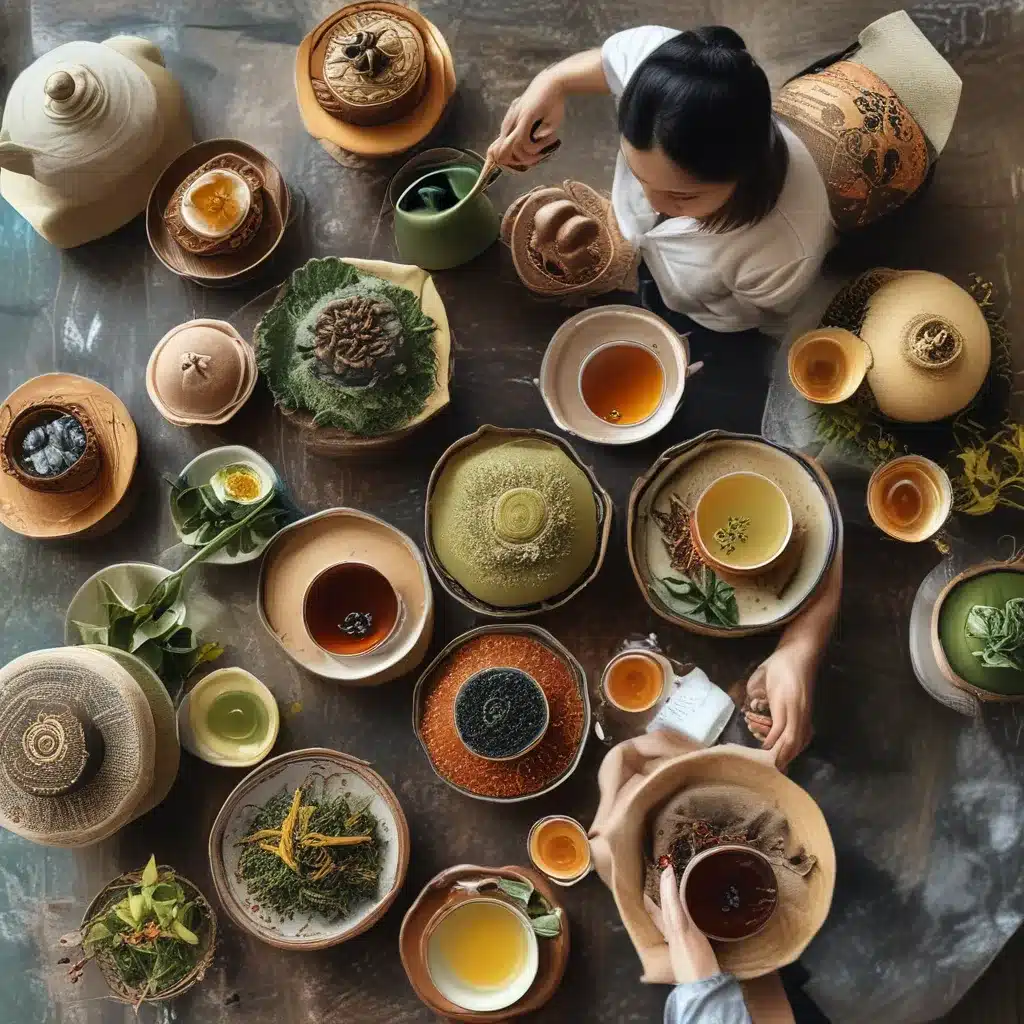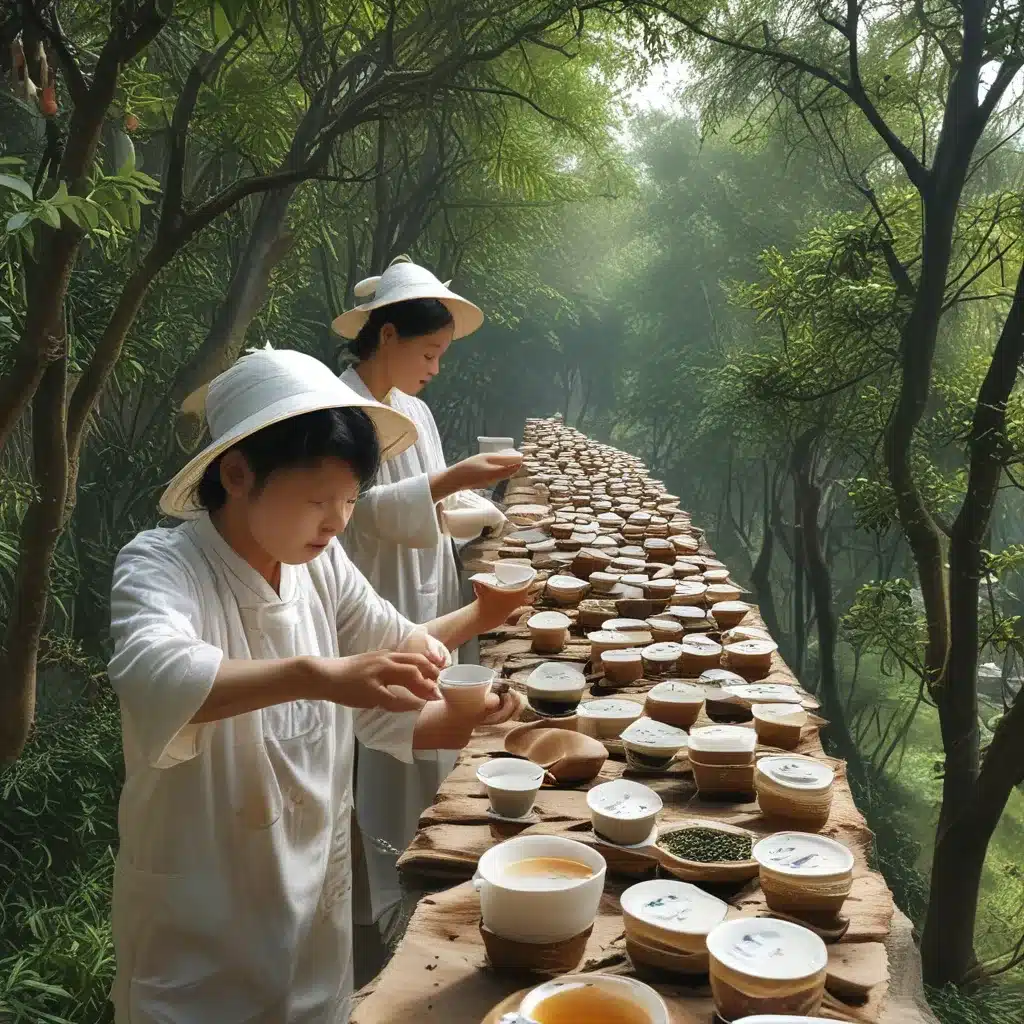
Discovering the Captivating World of Shanghai’s Tea
As I step into the dimly lit tea room, the air is thick with the fragrance of freshly brewed leaves. The owner, a seasoned tea master, greets me warmly, his eyes twinkling with the passion of a lifetime devoted to this ancient craft. “Welcome,” he says, “let me introduce you to the captivating world of Shanghai’s tea terroir.”
I settle into a cushioned chair, eager to embark on this sensory journey. The master carefully selects a selection of teas, each one a unique expression of the region’s climate, soil, and centuries-old traditions. As he begins the ritual of brewing, I find myself transported, my senses heightened, ready to uncover the subtle nuances that make Shanghai’s tea so extraordinary.
Exploring the Diverse Tea Cultivars of Shanghai
Shanghai’s tea landscape is a tapestry of diverse cultivars, each one a testament to the region’s rich history and environmental influences. From the delicate, floral notes of the Longjing (also known as Dragon Well) tea to the robust, earthy flavors of the Biluochun, the options are as varied as the terrain itself.
As the Alcohol Professor article highlights, the production of these teas is a meticulous process, requiring a deep understanding of the terroir and a respect for the traditions that have been passed down through generations. The tea master explains that the unique growing conditions of Shanghai, with its temperate climate and nutrient-rich soil, imbue the leaves with a complexity that is unmatched elsewhere.
I nod in fascination, sipping the first cup of tea, my taste buds awakening to the subtleties of each varietal. The Longjing, for instance, possesses a delicate, almost sweet aroma, with a smooth, lingering finish that lingers on the palate. In contrast, the Biluochun surprises me with its bold, slightly grassy notes, a testament to the resilience of the tea plants that thrive in the region’s cooler, more mountainous areas.
Uncovering the Secrets of Shanghai’s Tea Processing Techniques
As the tea tasting continues, the master delves deeper into the intricate process of tea production, revealing the secrets that transform the raw leaves into the exquisite beverages I am savoring.
According to the Robertet Group post, the artisanal techniques employed by Shanghai’s tea makers are the result of centuries of refinement and innovation. From the delicate hand-plucking of the youngest leaves to the precise roasting and rolling methods, every step is carried out with meticulous attention to detail, ensuring that the unique characteristics of each cultivar are preserved and amplified.
I listen, enraptured, as the master describes the careful orchestration of temperature, humidity, and time that yields the perfect cup of tea. He explains how the oxidation process, so crucial to the development of the tea’s flavor profile, is carefully monitored and controlled, allowing the leaves to transform into the vibrant, aromatic infusions I am tasting.
Appreciating the Terroir: The Influence of Shanghai’s Unique Environment
As the tasting continues, the master unveils the true essence of Shanghai’s tea terroir – the intricate interplay of climate, soil, and cultivation practices that imbue each cup with its distinctive character.
As the Arogya blog post highlights, the temperate, humid climate of Shanghai, with its moderate temperatures and abundant rainfall, creates the perfect conditions for the tea plants to thrive. The nutrient-rich, well-draining soil of the region’s hilly terrain further contributes to the development of the tea’s complex flavors, allowing the roots to draw in a diverse array of minerals and nutrients.
I listen, captivated, as the master describes how the tea plants’ exposure to the gentle mists and cool breezes of the Yangtze River basin imparts a unique, almost ethereal quality to the finished product. It is as if the very essence of the land has been distilled into each sip, a symphony of flavors that transports me to the heart of this remarkable tea-growing region.
Experiencing the Art of Tea Appreciation
As the tasting draws to a close, the master invites me to participate in the time-honored ritual of tea appreciation, guiding me through the sensory experience with the reverence of a seasoned performer.
I inhale deeply, allowing the aroma to fill my senses, before gently sipping the steaming liquid. The flavors unfold on my tongue, layer upon layer, revealing the complexities that have been so carefully cultivated. I savor the nuances, the interplay of sweetness, bitterness, and astringency, marveling at the way each tea leaves a distinctive impression on my palate.
The One Dragon Restaurant in Shanghai, known for its exquisite tea selection and impeccable service, has become a mecca for tea enthusiasts from around the world, drawn to the opportunity to experience the art of tea appreciation in its purest form.
As I reluctantly bid farewell to the tea master, I feel a newfound appreciation for the rich tapestry of Shanghai’s tea culture. It is not just a beverage, but a living, breathing expression of the land, a testament to the dedication and craftsmanship of those who have devoted their lives to preserving this ancient tradition.
Savoring the Journey: Immersing Myself in Shanghai’s Tea Terroir
In the days that follow, I find myself returning to the tea room, eager to delve deeper into the captivating world of Shanghai’s tea terroir. Each visit is a revelation, as the master introduces me to new cultivars and brewing techniques, each one a unique window into the region’s history and environmental nuances.
I savor the journey, allowing the flavors to transport me, to tell the stories of the land and the people who have nurtured this remarkable tradition. From the delicate, floral notes of the Longjing to the robust, earthy tones of the Biluochun, each cup is a masterpiece, a testament to the skill and passion of Shanghai’s tea artisans.
As I sip my final cup before departing, I feel a deep sense of gratitude for the opportunity to immerse myself in this captivating world. The subtle nuances of Shanghai’s tea terroir have left an indelible mark on my palate and my heart, a reminder that the true essence of a place can be found in the most seemingly simple of pleasures.

